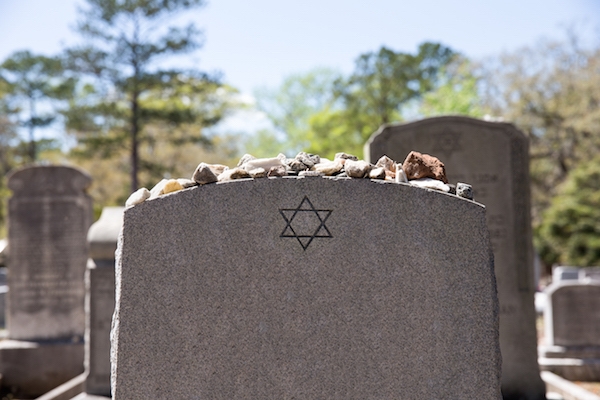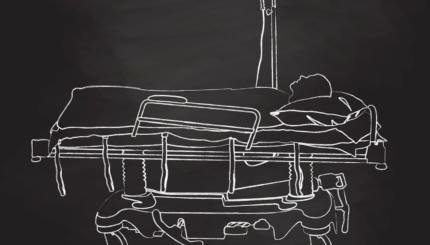The time between death and burial in Jewish tradition is brief — often a matter of mere hours, or perhaps a day or two to allow for arrangements to be made and family members to arrive. But for that duration, Judaism wraps those closest to the deceased (parents, children, siblings and spouses) in a shroud-like cocoon, bestowing upon them the special, fleeting status of onein.
The word onein, and the state of aninut, comes from a Hebrew root that can mean “to be under pressure.” The most salient feature of aninut is that a person is exempt from performing many of the positive commandments, such as offering blessings before and after meals, laying , and praying. (These exemptions, however, do not extend to the negative commandments, the things we are commanded not to do, such as consuming non-kosher food.)
This is a ritual turn of extraordinary sensitivity and, in the context of a rabbinic tradition that generally inscribes our years, days, and minutes with a richly appointed tapestry of observances, somewhat surprising. Aninut is generally understood in two ways.
First, it is recognition of the intensity of our initial bereavement. Our grief, in these moments, may be all consuming. Jewish law understands that and thus removes from our path obligations that may feel burdensome.

Help us keep Jewish knowledge accessible to millions of people around the world.
Your donation to My Jewish Learning fuels endless journeys of Jewish discovery. With your help, My Jewish Learning can continue to provide nonstop opportunities for learning, connection and growth.
Second, aninut acknowledges the work that is required to secure a proper funeral. It’s what the rabbis of the Talmud call attending to tzorchei ha-met, or the needs of the dead — a host of obligations ranging from sitting with the body to arranging and completing the burial itself.
This whole complex of tasks is often described as addressing the needs of contemporary mourners, who are reckoning with loss and looking for meaningful ways to say goodbye. But the ancient rabbis’ focus was elsewhere. For them, the tzorchei ha-met is a constellation of sacred commitments that demonstrate, in no uncertain terms, that the dead themselves have urgent needs. We sit with the body (what our tradition calls shemira) not only to make sure it remains unharmed, but also to ensure that the deceased does not get lonely as her soul transitions from this world to whatever comes next.
Short of embalming, which is generally forbidden by Jewish law, we see that the body remains as pristine as possible not only because decomposition may seem disgraceful, but also because of the ancient the belief that the dead can feel pain. As one particularly striking statement in the Babylonian Talmud (Shabbat 13b) puts it, “A worm to the dead is like a needle through living flesh.” Our obligations to our loved one, our tradition insists, do not end at the moment of death. Securing them a swift and dignified journey from death to burial — and accompanying them along the way — is the last kindness we do for them in this life. It is an all-encompassing commandment and so, while we’re busy fulfilling it, we are exempted from doing the others.
In addition to these two explanations of aninut, both of which have a great deal of merit, I would here like to suggest yet another one. Aninut is, at base, a rite of passage. That phrase — rite of passage — has a rather ancient and venerable ring, but it has a very specific and comparatively recent history. It was coined by French anthropologist Arnold von Gennep in the early part of the 20th century to describe what he believed was a transcultural phenomenon, our tendency to mark major transitions in life with rituals that allow us (and force us) to transition from one state to another. This process usually has three stages: 1) a symbolic death, in which we die to our old selves; 2) a period of liminality, in which we are neither fully alive nor fully dead; and 3) a moment when we are reborn anew.
In order to understand how these journeys from one state to the next apply to our journey, as mourners, from death to burial, it is important to know that in halachic, or Jewish legal, literature the Hebrew word for “exempt” (patur) is related to the word that means “to pass away” (niftar). For the rabbis, who believe that our ability to perform the mitzvot, or commandments, is the summum bonum of being itself, the sting of death is understood precisely in terms of the fact that the dead can no longer fulfill moral and ritual obligations as Jews. The dead can no longer pray nor give charity nor say baruch atah adonai. They are, at last, exempt.
When we lose someone very close to us, we may be shattered. Our torn clothing offers external testimony about our inner lives. How, we ask, can life go on without the person who is no longer with us? One answer — perhaps the truest answer — is that it won’t. Our lives will be forever different. And in the throes of such grief we may be overcome by the impulse not to memorialize our dead, but instead to die along with them. Our tradition, in its wisdom, indulges — but does not overindulge — this impulse. For a short while, though, it allows us to play dead, exempting us temporarily and allowing us to identify fully with those we’ve lost. Just as they cannot not pray, we do not pray. Just as they cannot mark their days and minutes with Jewish ritual, neither can we.
But Jewish law does not allow us to remain there for long. As Jews we bury the dead quickly not only as a kindness to them but also as a reminder to us. Life can and must continue in the wake of even the most tragic losses. Following a Jewish burial, funeral guests traditionally stand in two parallel lines, through which the bereaved exit the cemetery, receiving words of comfort as they make their way from the gravesite. Symbolically, this configuration of comforters recalls a birth canal. The moment we reach the end of the lines our transformation is complete. We are no longer onenim; we are reborn as avelim, as mourners in full. Like newborns, we go home to eat a meal that traditionally includes milk. Like small children, we will not feed ourselves; instead, for the duration of shiva, will rely on others to bring us food. Most importantly, we are no longer exempt. Once again, we offer brachot, or blessings. If the funeral happens before noon, the first thing we are supposed to do upon reaching our home is pray Shachrit, the statutory morning service. We are Jews, again, and we are alive.
(Rabbi Benjamin Resnick is the rabbi at Congregation Ahavas Achim in northern Massachusetts. He was ordained at the Jewish Theological Seminary in 2015 and he is currently pursuing a doctorate in Jewish mysticism. He has written for the Forward, Tablet, Modern Judaism, and the Journal of Inter-Religious Studies. He also co-hosts a podcast on contemporary spirituality called “While We’re Here.”)
Sign up for a Journey Through Grief & Mourning: Whether you have lost a loved one recently or just want to learn the basics of Jewish mourning rituals, this 8-part email series will guide you through everything you need to know and help you feel supported and comforted at a difficult time.
Looking for a way to say Mourner’s Kaddish in a minyan? My Jewish Learning’s daily online minyan gives mourners and others an opportunity to say Kaddish in community and learn from leading rabbis.



